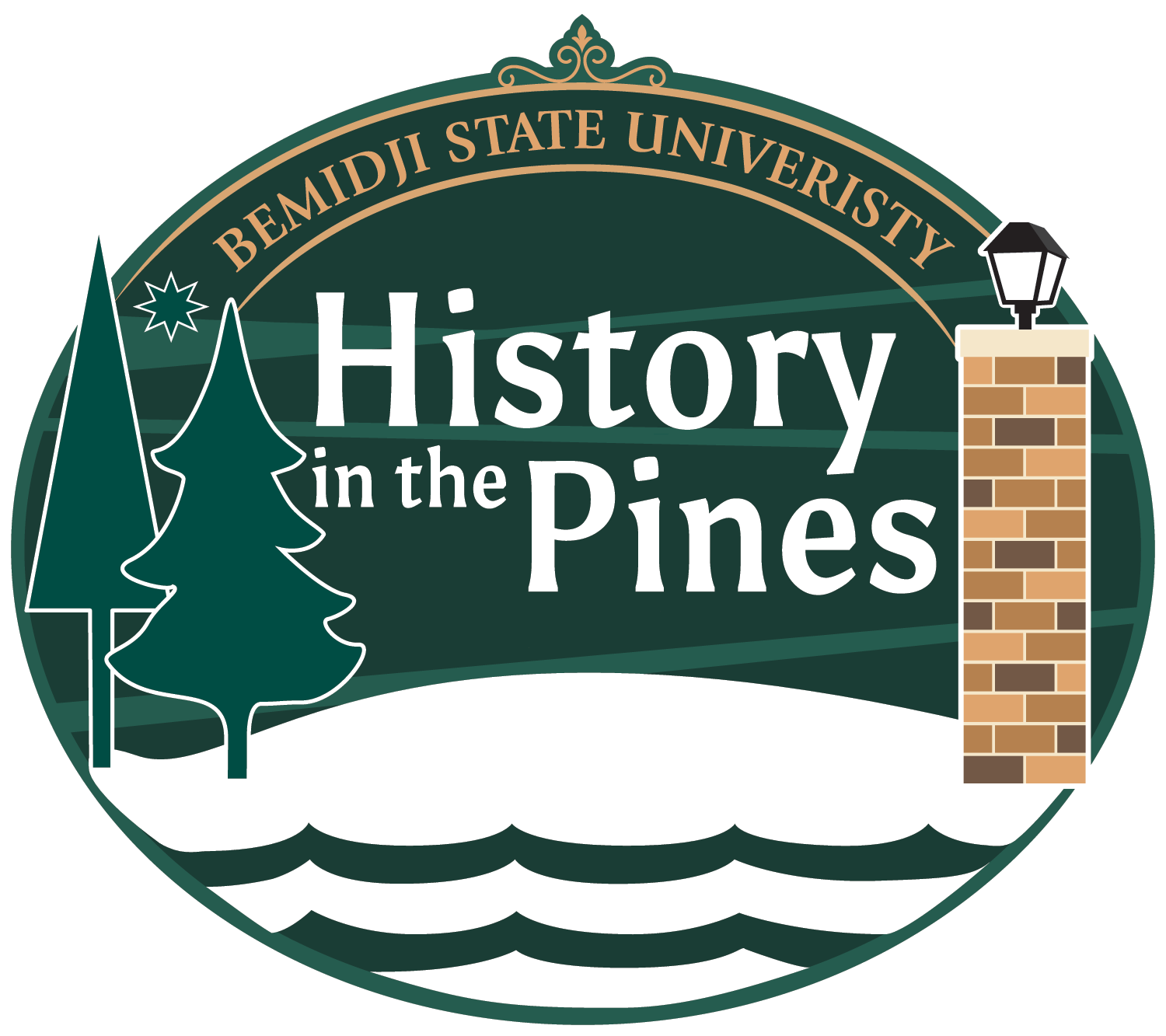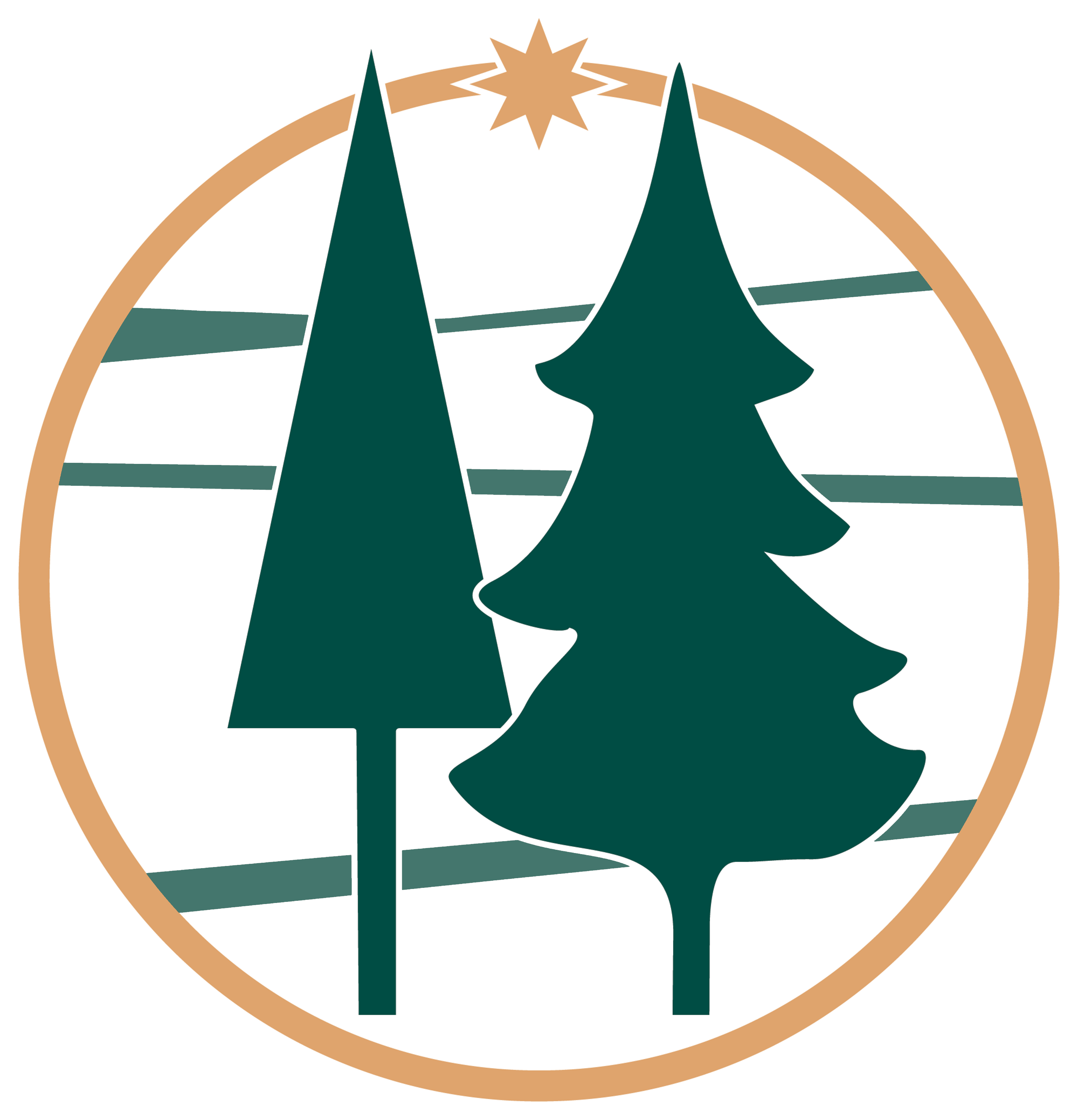Bemidji born. Beaver forged.
Like any college campus, Bemidji State University has formed its identity through its time-honored traditions. Unlike many of its counterparts, however, BSU is distinctly unique (and, dare we say, superior?) in many of its roots and active traditions.
The alma mater
The alma mater
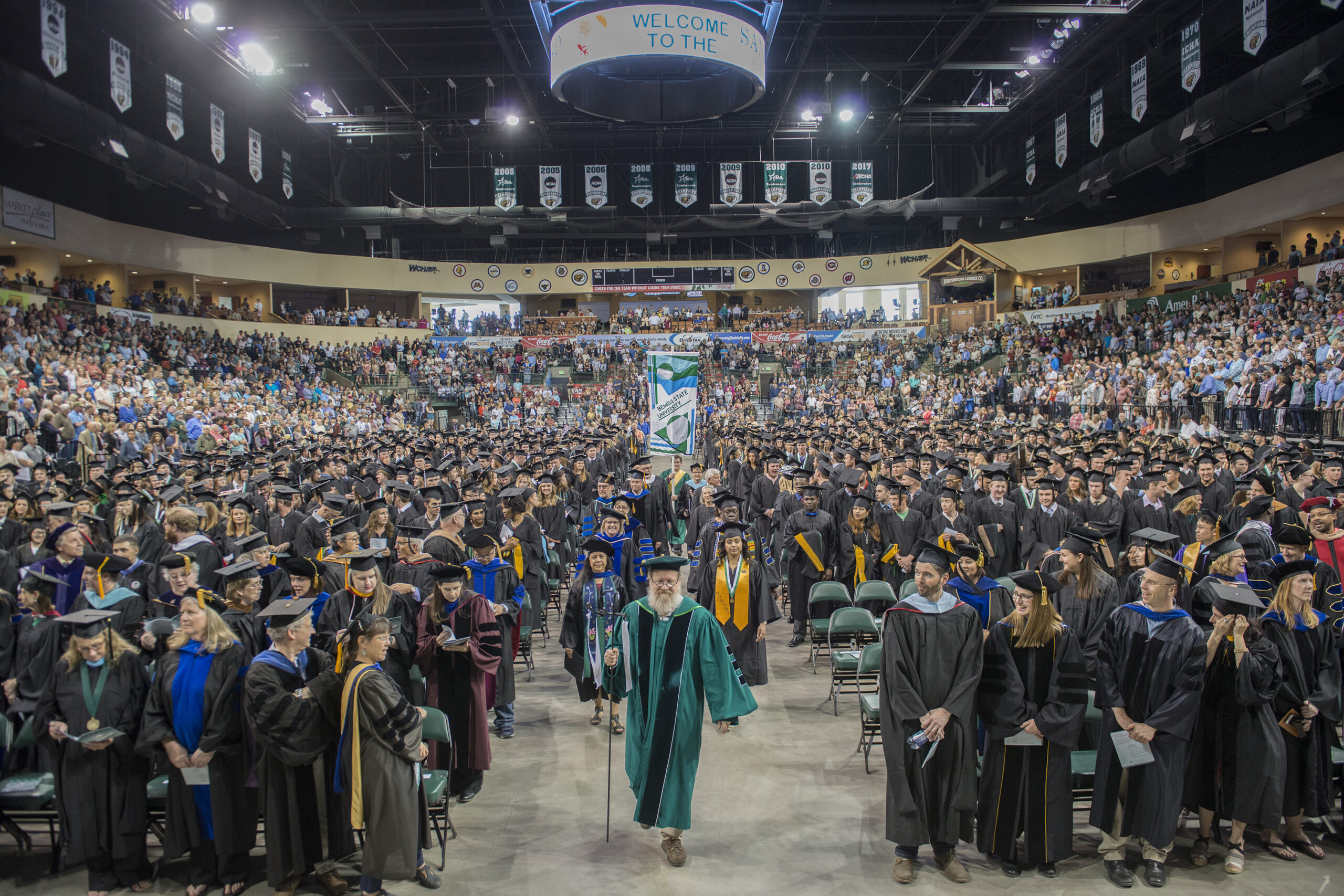
During the school's third year, a contest took place for the writing of lyrics to a school song. Marie Krogseng, who wrote "Hail to Thee, Bemidji College," won $5 when the school body unanimously selected her song. Later, Raymond Nelson's composition won a melody writing contest to accompany the ballad.
Today, BSU's alma mater is performed at each freshman convocation ceremony and again during commencement to symbolize the completion of graduates’ degrees.
Hail to Thee, Bemidji College
"On the shores of Lake Bemidji, where the stately Norways wave,
stands Bemidji State University; to her honor we shall say:
“Hail to thee, our alma mater; teach us beauty, teach us wisdom;
hail to thee, our alma mater; we shall carry on thy name!
"May the fresh green hue of springtime and the white of wintertime,
be our guide upon life’s upward slope; with our heads high, we shall say:
“Hail to thee, our alma mater; teach us beauty, teach us wisdom;
hail to thee, our alma mater; we shall carry on thy name.”
The Beaver head logo
The Beaver head logo
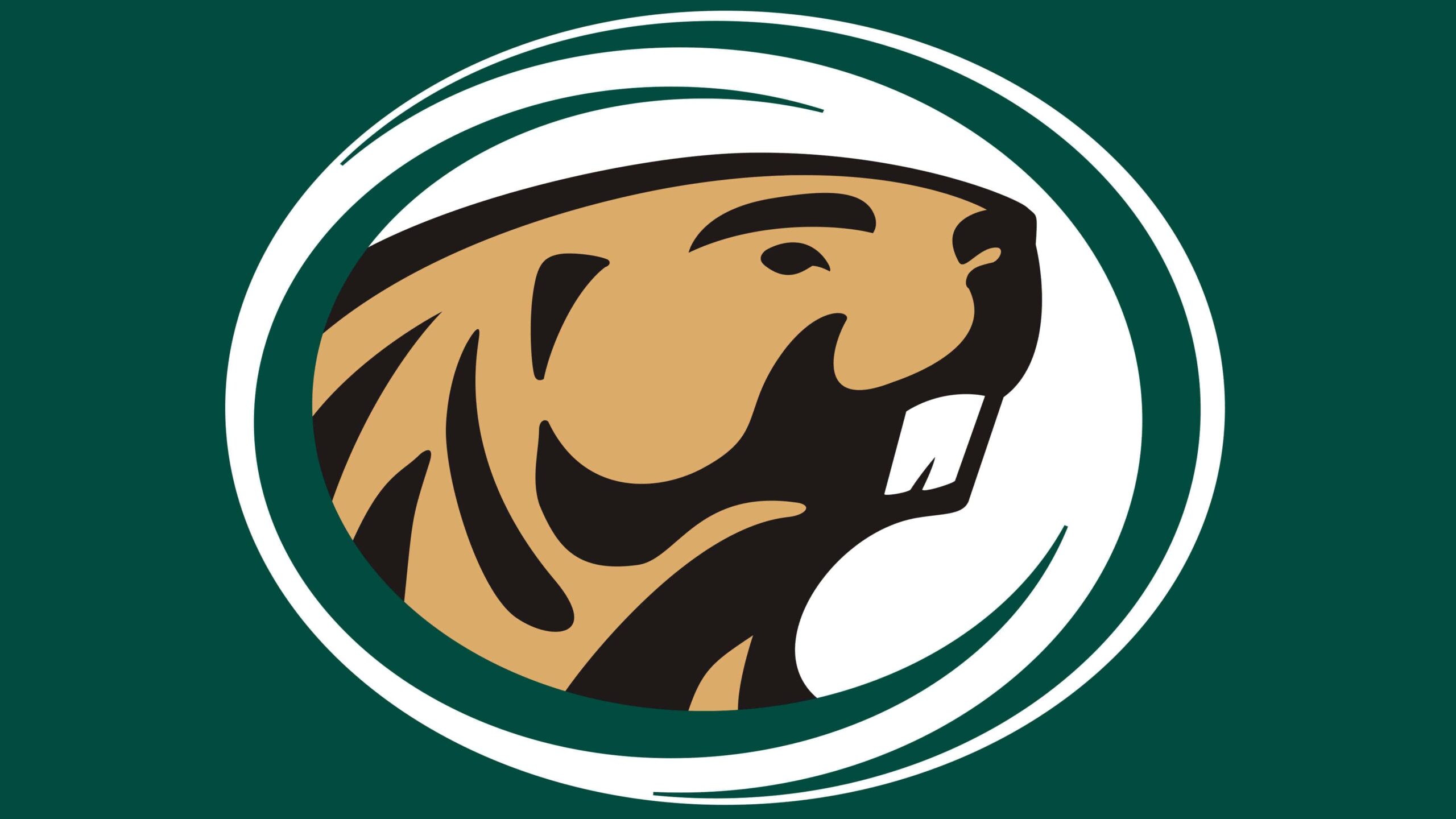
During the fall semester of 1998, campus-wide discussions were held on the need for new marks to represent the university as well as Beaver Athletics. The university marks at the time had been in place since 1974, with minor revisions in 1987, while no official athletic mascot, logo or image had been adopted for university use.
A committee was formed and, for the next academic year, an audit and review were conducted on the school logo and athletics imagery to determine what images were being used to represent the institution.
During the spring and summer of 1999, requests for proposals (RFP) were sought from outside firms to assist the university in this historic undertaking.
The BSU coaching staffs took great interest in the efforts to produce the new Beaver logo. They desired an image that would represent pride and confidence while being gender-neutral and not appearing cartoonish in nature.
The public relations firm of Russell & Herder of Brainerd was awarded the RFP for the logo project during the summer of 2000. For the remainder of 2000 and through early 2001, Russell & Herder helped oversee focus groups and surveys regarding the logo change.
In December 2000, preliminary logo designs were presented to the committee, and revisions were made until the time the new marks were formally adopted and officially unveiled March 28, 2001, at a ceremony on campus.
BSU fight song
The BSU fight song
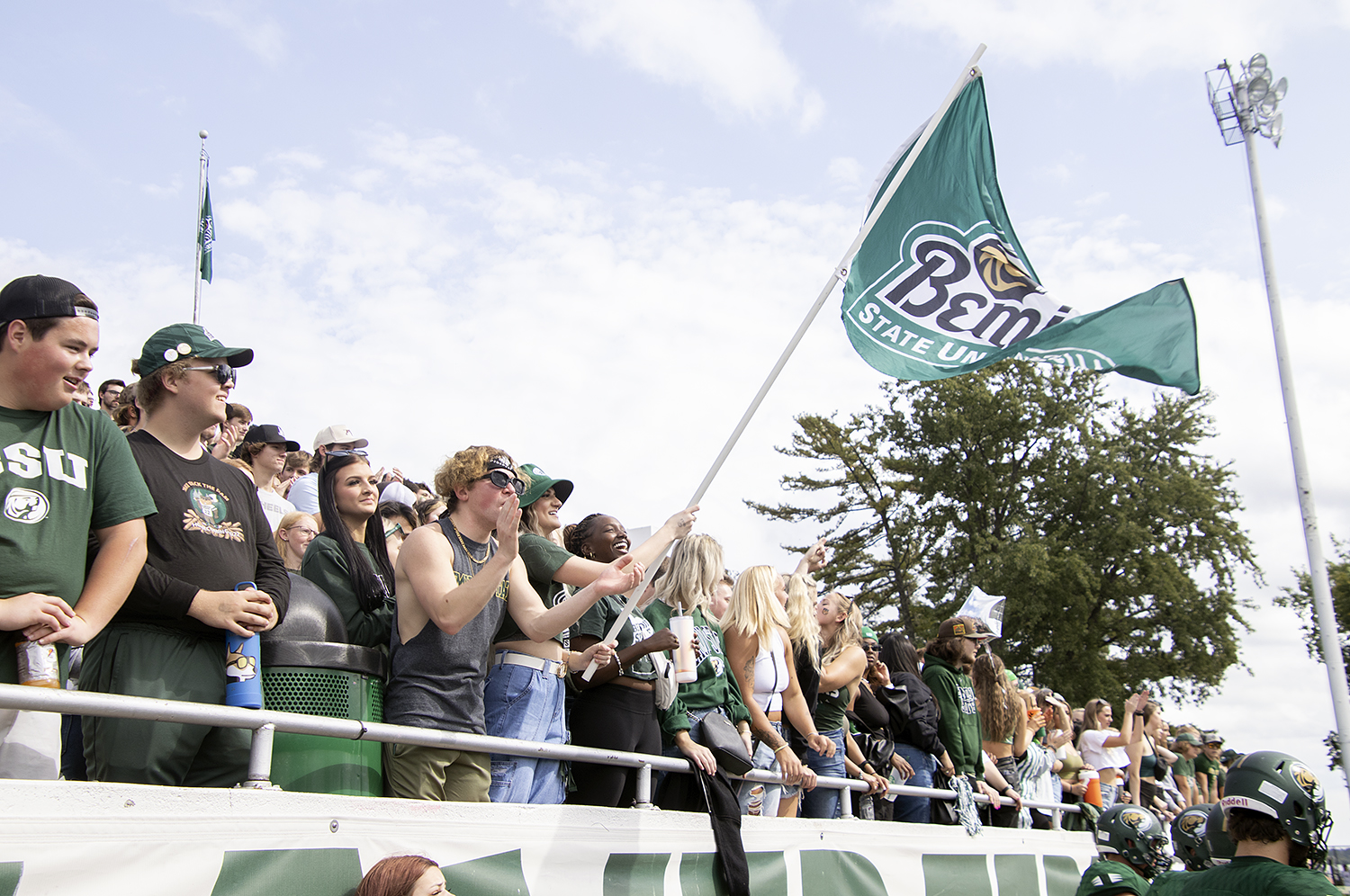
The BSU fight song was written by longtime (but at that point brand new) professor Ron Gearman and his advanced harmony class in 1947. They collectively wrote the words and music to the fight song during one class period, and the catchy pep tune became an immediate hit on campus.
Go, Bemidji Beavers
“Go Bemidji Beavers
Go you green and white.
Go Bemidji Beavers
Fight with all your might!
Rah! Rah! Rah!
We are here to cheer you
We are out to win your fame.
So go Bemidji Beavers
Fight to win this game!
B-E-M-I-D-J-I
Bemidji, Bemidji
Goooo Beavers!”
EuroSpring
EuroSpring
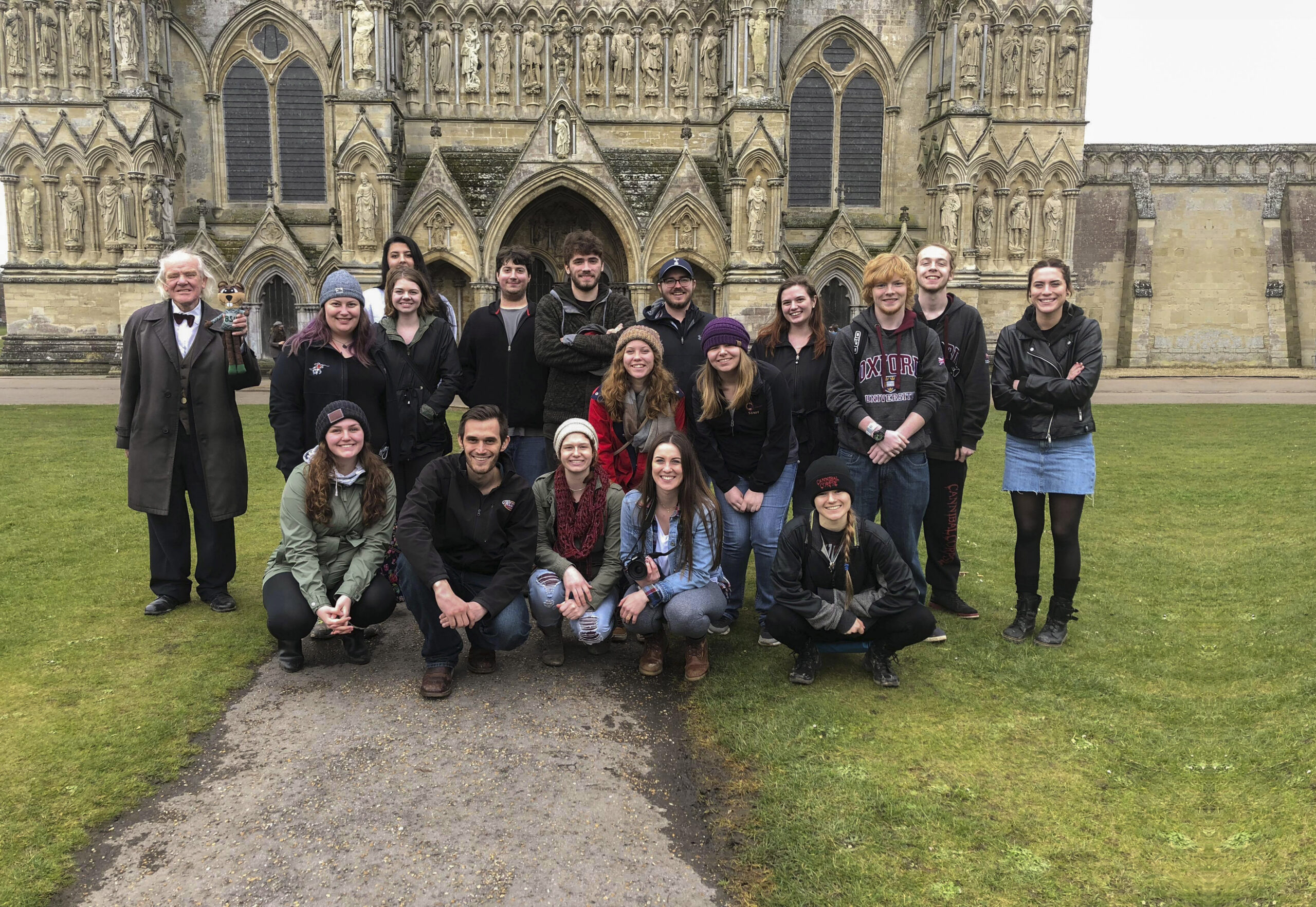
EuroSpring is BSU’s longest-running study abroad program. It allows students the chance to study in Oxford, England, while paying BSU tuition and fees and earning BSU credit.
The trip comes with incredible opportunities outside the classroom, as well. Field trips include visits to Stonehenge, the Royal Dockyards at Portsmouth, Salisbury Cathedral, City of Bath and others.
Here's how it all began.
In 1975, faculty from the visual arts, music and speech-theatre programs in the division of fine arts discussed how they might initiate a quarter of study in Europe. The name "Eurospring" was coined by the group. Professor Paul Brandvik was corresponding with the Director of the Vienna International School of Music, Paul Kutny. In turn, Kutny knew the director of the Oxford University Center for Medieval and Renaissance Studies, John Fennelly. The committee decided to shape a program around two study residencies: four-plus weeks in Oxford and four-plus weeks in Vienna.
The division faculty decided to go with the plan to begin in the spring of 1977. The first EuroSpring group had 102 students plus three full-time faculty and three graduate students. There were 50 concert choir students, most of whom were not music majors. The University Special Programs Committee mentioned by professor Schnabel was supportive but not involved with the inaugural EuroSpring.
The principal creative force for the first EuroSpring was Fulton Gallagher, head of the division of fine arts. He was the architect who visited the sites, conferred with Oxford and Vienna, met with academic departments to devise curriculum, developed a budget and finance plan. Gallagher advised every student and supervised all planning. President Robert Decker vigorously supported the planning and put his office – and money – behind it. Decker and Gallagher visited the group in Vienna in early May.
Credit Gallagher and the fine arts faculty for the concept and for EuroSpring's successful establishment.
Freshman beanies
Freshman beanies
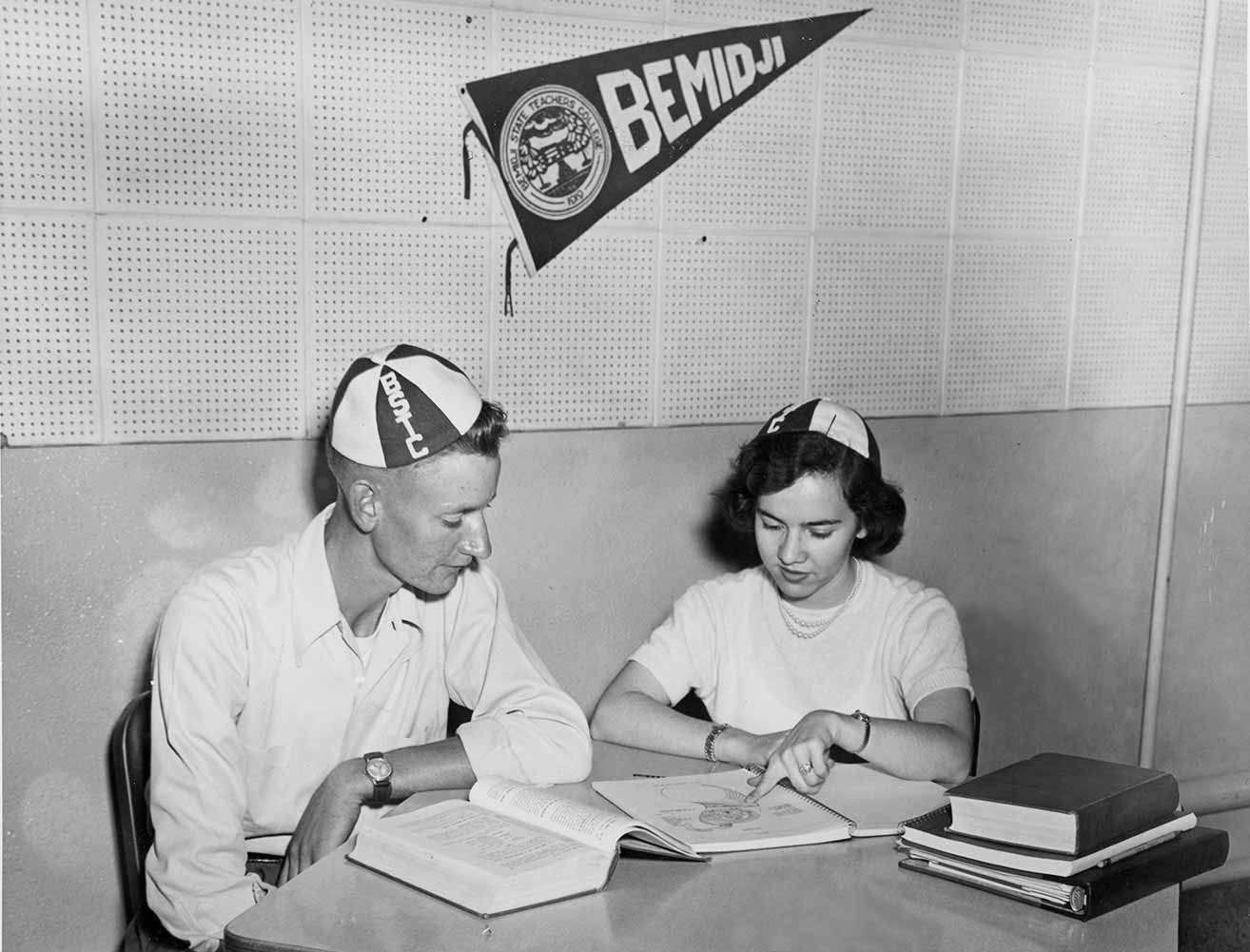
The tradition of freshman beanies on campus existed roughly from the 1920s to 1972. New freshman were required to wear beanies for their first week to help distinguish them from the upperclassmen.
Up until 1972, a "given" requirement for new freshmen on campus was to wear beanies. Although these tiny caps did change in appearance over the decades – sometimes all green, sometimes green and white, with or without letters – they had been part of the expected and generally accepted college experience at the start of every school year. No more. The student governing board decision to abandon them came under the heading of ending hazing in general and in particular preventing specific students from being overly harassed by upperclassmen.
Funtastic Dance Follies
Funtastic Dance Follies
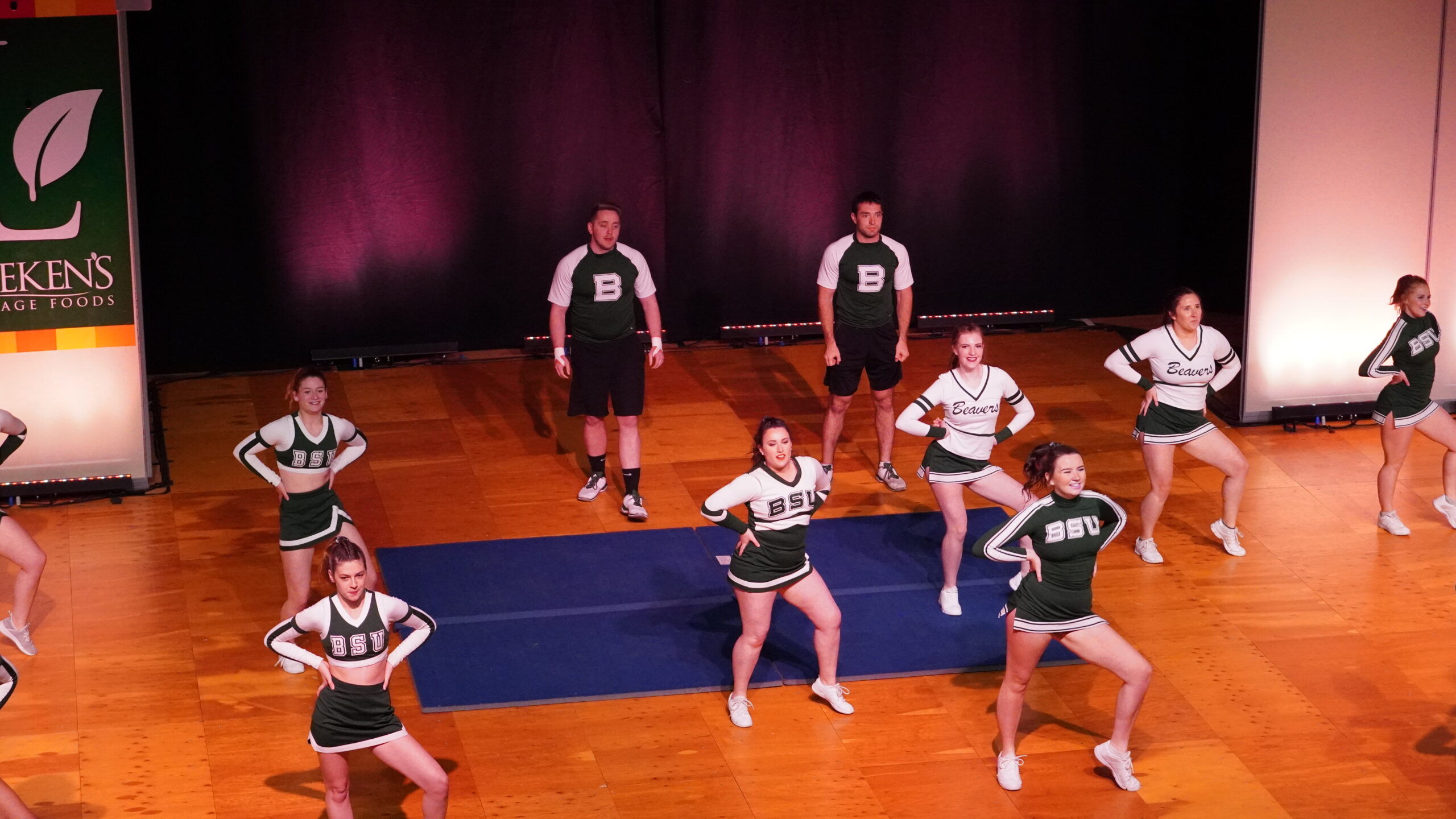
Come and be wowed by Bemidji State’s incredible dancing talent. Funtastic Dance Follies has been entertaining audiences for over 70 years, serving as a showcase of BSU’s best dancers. This is your chance to shine and showcase your skills, whether it be your TikTok-inspired moves or your ballroom expertise. It’s the perfect way to close out the academic year and have some fun on stage.
The Dance Follies became the biggest social event of the spring for many years. It started small under physical education teacher Myrtie Hunt, but by the 13th annual dance show in 1979 – under the direction of Marion Christianson – the show played four nights to overflowing audiences in Memorial Hall. So special was the event to some students that it became the only reason for their enrolling in college.
The first program, or "modern dance show," was held in 1946 at the Bemidji High School auditorium, since there were no facilities adequate for the performance at the college. There were a total of eight students involved in this program, and the audience was small but encouraging. No budget had been allotted, so for costumes the dancers turned to Norma Fenson-Olson, who, with the help of her mother Ella, graciously designed and made all of the costumes.
In that first show was a young soloist named Marion Fenson, who would eventually inherit control of the show from Dr. Hunt and bring it to its current level as the Funtastic Dance Follies. She quickly became known as "Mrs. C" – Marion Christianson.
The last modern dance program under Dr. Hunt was presented in 1976. As the dancers gathered together backstage just prior to the start of the performance, there was nervousness and anticipation – but reminding them of their hours of practice as she did each year, Dr. Hunt sent them off with the statement, "This is your hour of truth."
In 1977, the dance show was directed by Pat Schneider, who was assisted by Marlene Techau. It was the next year, 1978, when Christianson took over and brought the dance show into the contemporary age. Her first action was to rename the show the "Funtastic Dance Follies."
Homecoming lake jump
Homecoming lake jump
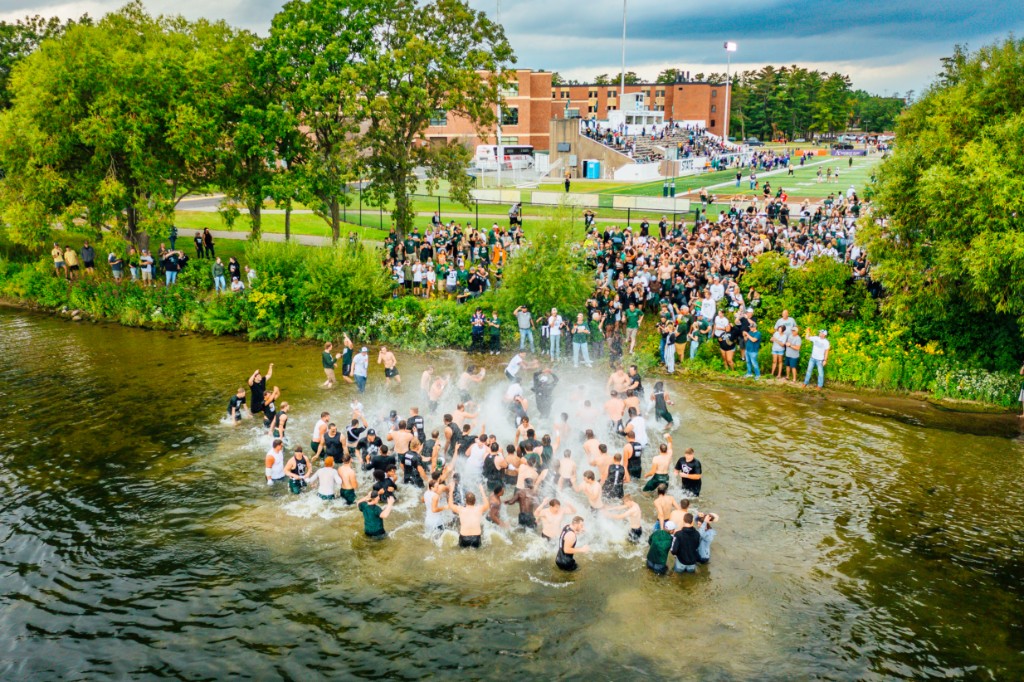
One of the best college football traditions takes place at one of the most beautiful settings in the country. It's a match made in heaven.
There is a tradition at Bemidji State that the majority of college campuses in the nation physically can’t adopt. Being one of just a handful of college football fields with a lake as its neighbor, the Beavers have a homecoming victory tradition like no other. After a Homecoming win, gear and all, the BSU players and coaches celebrate by taking a dip into Lake Bemidji, splashing around and singing the school song.
The first Homecoming at Bemidji Teachers College was held Oct. 6, 1927. Until 1931, Homecoming was a biennial affair. In that year, the demands of the alumni – eager for this season of reunion – changed it to an annual celebration with all the traditional dinners, teas, parades, dances, bonfires and football games.
During the 1993 season, the Beavers were off to an 0-4 start. In an attempt to motivate the team and the campus for Homecoming, graduate assistant coach Frank Haege wrote a faux postgame recap of the upcoming game between Bemidji State and Southwest State. The article included accounts of how the defense dammed the Mustangs and how the offense executed with precision. Haege also added that, after the victory, the Beavers jumped into Lake Bemidji in a fit of jubilation! Haege and others posted the article around campus during the week leading up to Homecoming.
As it happened, the Beavers went on to lose that Homecoming game 35-8 and never did win a game that season, finishing 0-10. There were further threats of jumping into the lake if the Beavers won Homecoming the following year, but BSU lost to Moorhead 33-6 in 1994.
Finally, in perhaps Bemidji State’s best effort during the Kris Diaz era, the Beavers beat defending conference champion Winona State 24-14 on Homecoming in 1995. Off went the helmets, and into Lake Bemidji went the players and coaches. Everything went in – shoes, equipment, jerseys and all. A tradition was born.
Before that jump in the lake, Bemidji State was just 1-26 in their past 27 games. But after that victory over Winona State, the Beavers went on to beat Minnesota Morris and Northern State for their first three-game winning streak in over a decade.
Since 1995, BSU has been celebrating victories in its annual Homecoming football game with a postgame lake jump into the waters of Lake Bemidji, which borders Chet Anderson Stadium on the east.
Madrigal Dinners
Madrigal Dinners
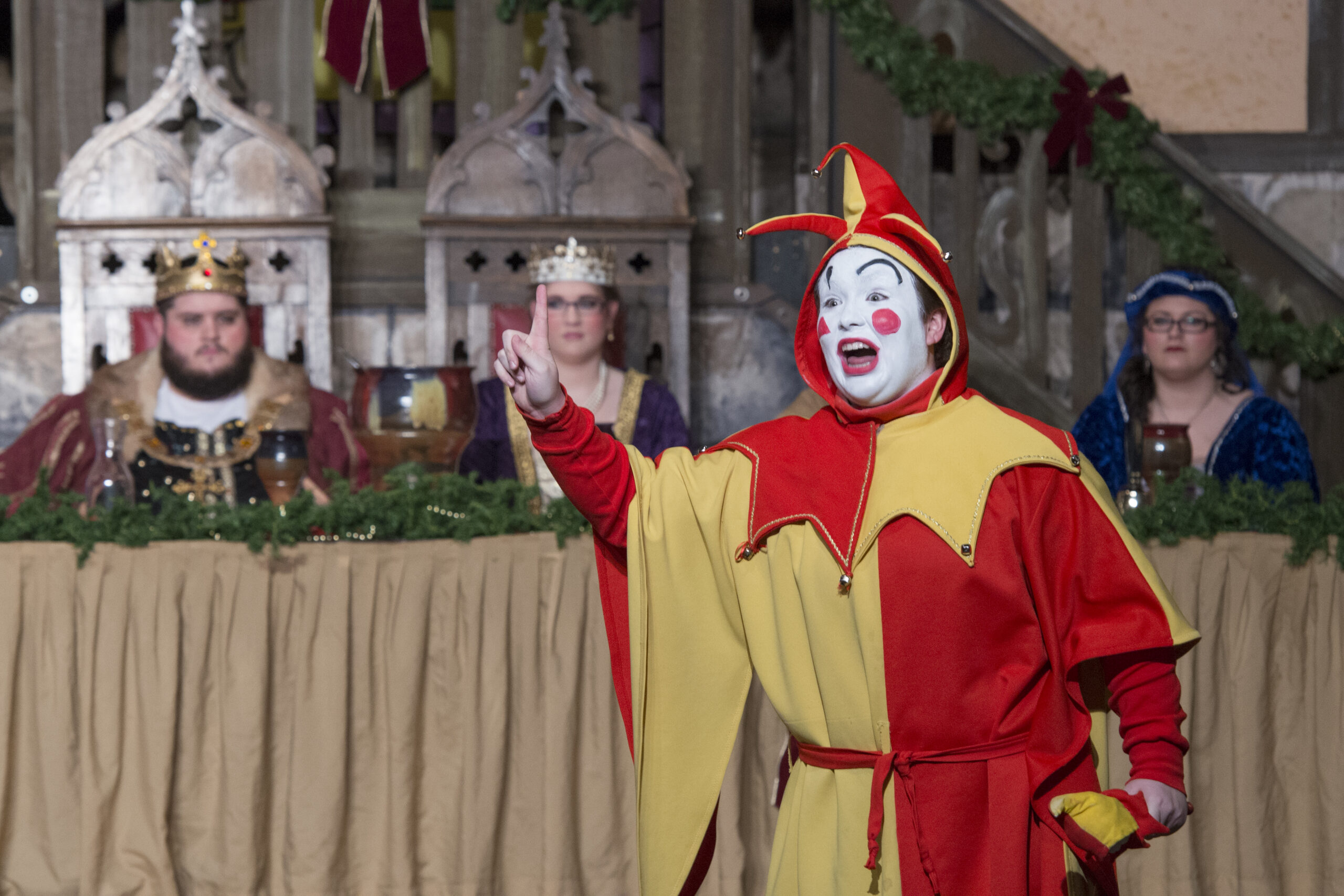
The Madrigal Dinners were founded at BSU in 1969 under the tenure of Dr. Paul Brandvik, professor emeritus of vocal music, and ran for 50 years until it was retired in 2018.
The dinners combined musical, visual, dramatic and culinary arts into an evening that transcended time. Since their debut at Bemidji State, the dinners have been performed throughout Minnesota, Washington and Wisconsin.
The first Madrigal Dinner, in 1969, was held downstairs in Hickory Hall (now named Decker Hall). By today's standards, it was very simply done: paper tablecloths, inexpensive fabric costumes and a script that told the jester to "tell some jokes." A rare instant success, those first performances had to add up to 40 extra chairs each night to accommodate more than 300 guests.
Over the years, a wardrobe of authentic medieval costumes were designed and sewn by Brandvik's wife, Mary Lou, and various assistants. New costumes were made each year as old ones were retired or resized.
In 1972, the dinners were moved to the then-newly completed Beaux Arts Ballroom. By this time, the performances included elaborate costumes and set, a brass quartet fanfare and a recorder consort. For its final two years, the show moved off campus to Salolampi, the Finnish Village at Concordia Language Villages just north of Bemidji.
The decision to discontinue the Madrigal Dinner tradition was made only after careful consideration and extensive conversations between BSU alumni, local music supporters, the music department's faculty and even Brandvik, the event's founder. Both Paul and Mary Lou Brandvik were in attendance for the final opening night.
The 50th and final Madrigals concluded in December 2018, and the production restaged the original 1969 masque. Dwight Jilek, Bemidji State's director of choral activities, said the final performance – which encompassed a half-century of proud tradition – was a fitting opportunity to give the Madrigal Dinners "a dignified and honorable end."
The naming of the Beavers
The naming of the Beavers
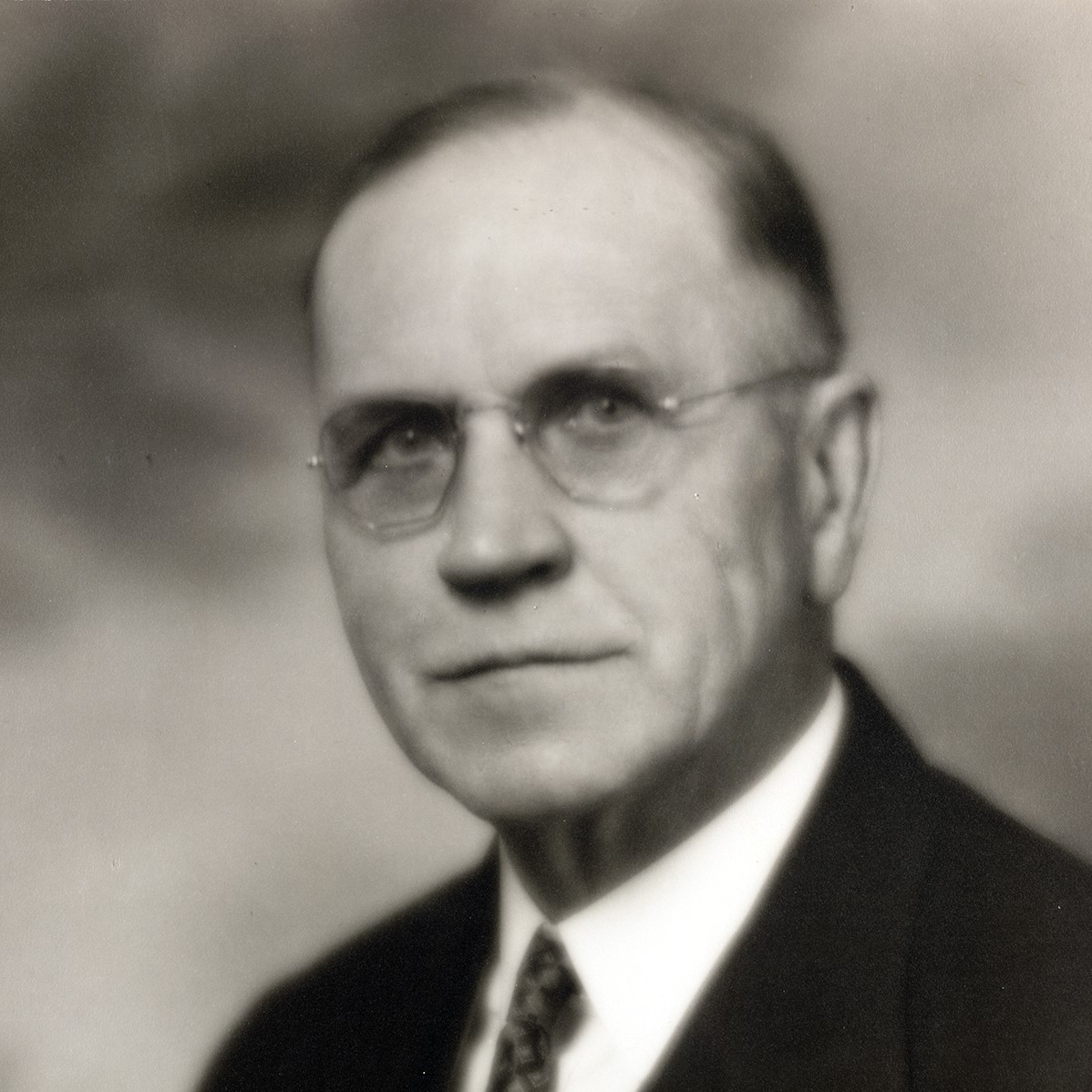
As President Manfred Deputy reviewed football practice one evening in May 1932, he remarked that the players were "working hard as beavers." He called the team into a huddle and, raising his hands above their heads, declared, “I christen this team the Beavers!”
The “Beavers” nickname is symbolic of the silent, hard-working teams representing Bemidji State University.
The Northern Student
The Northern Student
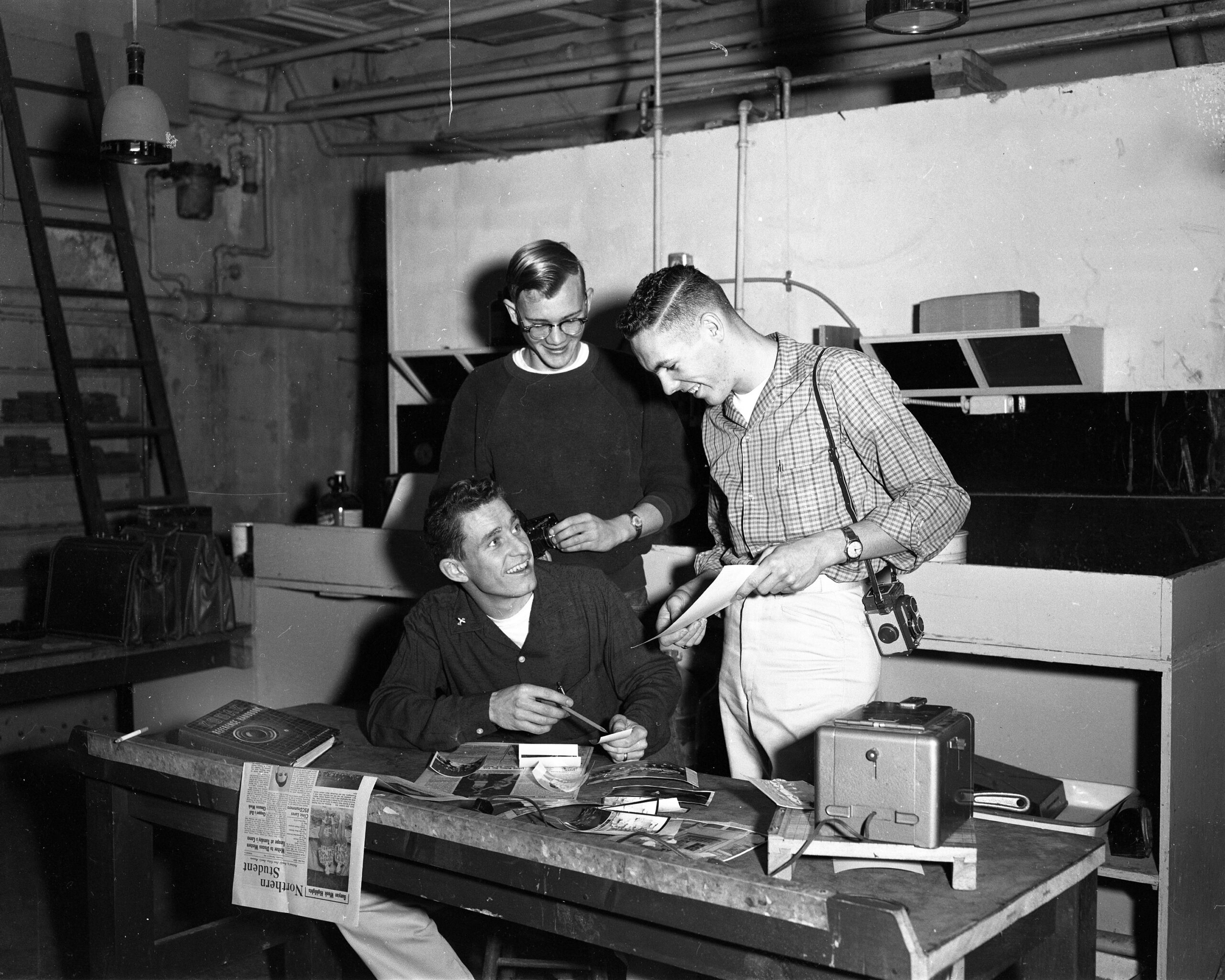
The Northern Student, Bemidji State University’s longstanding student publication, ran its first issue on Nov. 20, 1929.
“This first issue of the Northern Student, a weekly publication, is the materialization of an idea that is not new in the college,” that original publication read. “… It will bring a better understanding between the individual and the college. It will show more clearly the relation of each student to the college. This is a student publication edited by members of the student body, and each student of the college is invited to join the staff in making this a paper to be proud of.”
That inaugural issue of the newspaper highlighted the latest campus happenings, from Sanford Hall residents entertaining classmates with a musical number during the college’s weekly “recreation hour” to the recap of an international musician performing on campus. Other news included the seniors ordering class pins, a recruitment visit from the U.S. Navy and a featurette on the Nautilus Club, a rather exclusive literary organization.
“The Northern Student is an invaluable source of information on Bemidji College, especially after it began publication regularly in 1929,” historian Art Lee penned in his book, University in the Pines. “Though much of the information in it might be labeled historical trivia, nevertheless a great deal of what went on at the College regarding enrollments, students and student life was recorded in these publications.”
Manfred Deputy, the college’s first president, was the one who coined the “Northern Student” title. Deputy had recalled the name of his college newspaper, the Indiana Student, and he substituted “Northern” for “Indiana” for BSTC’s publications. The college first used the name on all of its printed materials, whether they were newspapers, bulletins or articles written by faculty members.
The first formal newspaper edition came on Nov. 20, 1929. Back then, Norman Widsten was the editor in chief and E.W. Beck was the faculty advisor. The other charter staff members were associate editors Walter Harvey, Linda Jokela and Roy Johnson; sports editor John Lucas; editorial writers Bjorn Hakkerup and Marion Brown; news reporters Clifton Kartinson and Nora Smith; and business manager Paul Koefod.
The Northern Student’s title was drawn on for those first editions, while the first photo – a portrait of students Ellen Brooks and Marguerite Ogren – didn’t run until May 30, 1930. The Northern Student started as a weekly in 1929 and continued as a newspaper with various publication schedules until the 21st century.
Changes in technology led The Northern Student to reconsider how it published, and in 2011, it became a monthly color magazine with a website. It even kept running during the pandemic, when the university went remote with classes. The magazine shifted to producing four editions a year in the fall of 2021 following budget cuts.
No matter how often ownership has changed hands, the award-winning publication and its stewards have built its reputation as one to be trusted, dependable and entertaining. A 1950 staff writer once summarized it as such, saying, “As a person reads about the development of our school paper, we begin to realize the long hours that have been put in to make it the fine paper it is. In its years of existence, it has won many awards, which proved its content and organization is good.”
The Northern Student has churned through numerous styles, formats and regimes over the decades, but its footprint on campus has been a constant. It has reported seriously on unfavorable news that administration didn’t like – and then stood up for itself – and also goofed off with “faux” news in iconic April Fools’ Day editions. (It is run by college students, after all.) It has mourned the loss of presidents, celebrated the crowning of national champions and covered the biggest milestones and achievements to ever come out of the college.
And, perhaps above all, the Northern Student has faithfully upheld its duty: preserving the history of Bemidji State University.
Parking on Lake Bemidji
Parking on Lake Bemidji
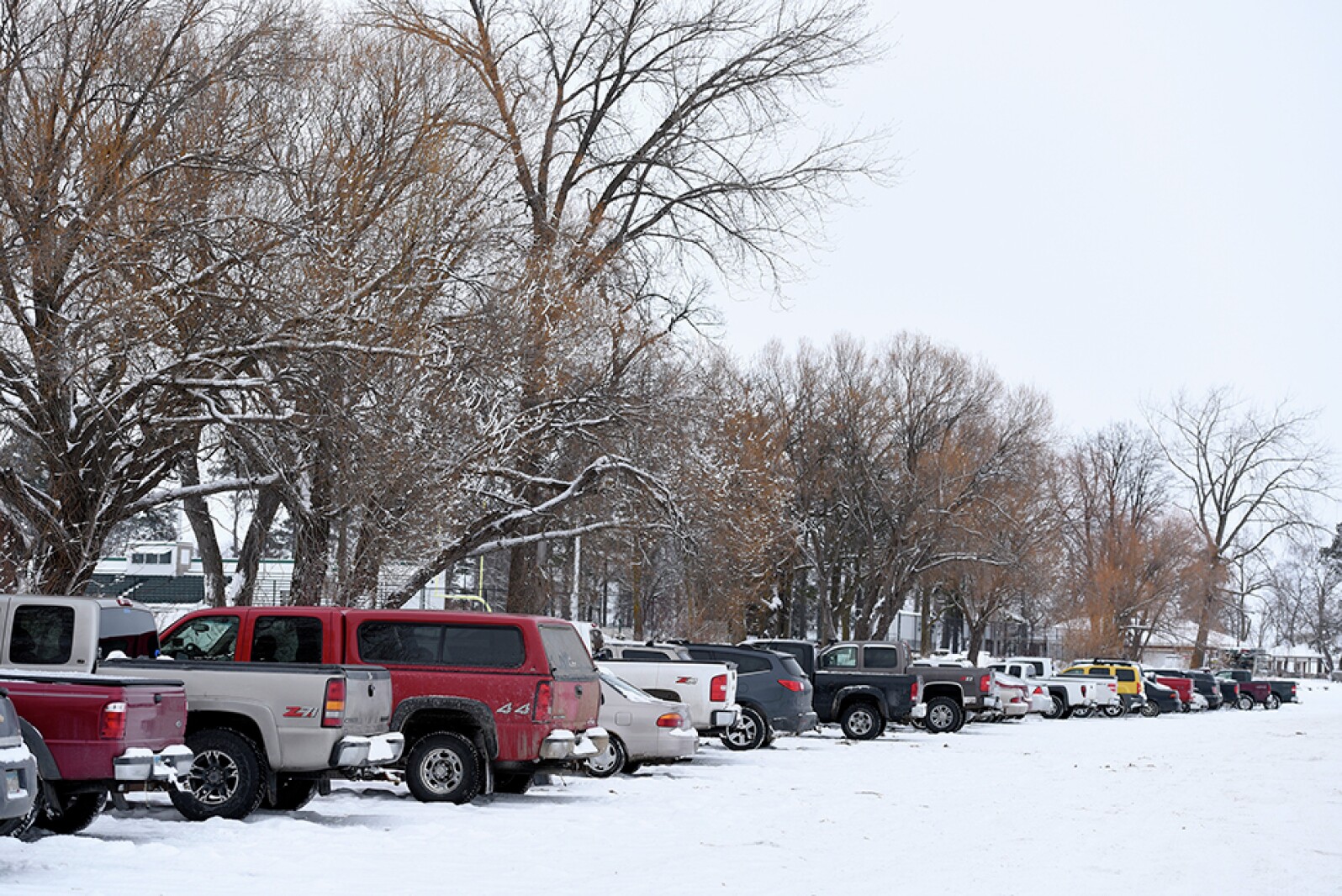
For the month or two each year when it's cold enough that social conventions begin to break, Lake Bemidji is as good a place as any to leave your car if you have classes along the shore.
Written by Kyle Farris, Bemidji Pioneer
Photo by Jillian Gandsey, Bemidji Pioneer
Published 8:43 a.m. on Feb. 2, 2016
This parking lot cowers from the sun.
But for the month or two each year when it's cold enough that social conventions begin to break, Lake Bemidji is as good a place as any to leave your car if you have classes along the shore.
Bemidji State University students have been doing it for years, taking advantage of the free parking and short walk, joining the fish houses in a place where parking tickets can't reach, where bass and walleye silently swim the cold waters underfoot.
"I wait till you see the really big trucks," said sophomore Sara Janssen, who drives a Mazda6, "because if the guys want to risk their really big trucks, I'm fine."
Now, for as long as it stays cold, "I just walk right up to class," she said.
On a Thursday afternoon, about 100 cars fan out across the lake's west side. There are no lines, no curb to mark your place, so the rows of cars and trucks and snowmobiles tend to stagger a bit. Students come and go using entries at Diamond Point Park or the Paul and Babe statues, plowing through the lake's foot-deep snow on tire tracks made by their classmates.
"It's such an interesting phenomenon," said Scott Faust, director of communications at the school. "It's one of the most talked about things when alums share their stories, what makes BSU unique. It's one of those things you have to see to believe."
Faust notes the university has plenty of open spots on dry land. It's just hard to beat free parking that's so close to both U.S. History and Macroeconomics.
Juniors Xavier Lopez and Jenna Kaiser like the predictability of bringing their two cars here. "There's always a guaranteed spot," she said.
The couple did their first ice-parking of the season when spring semester began a few weeks ago. Kaiser's dad does maintenance in Hagg-Sauer Hall, and even he parks here.
"I was telling my cousin about it," Lopez said. "I sent him a Snapchat when we got here.
"They think we're crazy, but I don't think it's that bad."
Janssen saves a couple hundred bucks by not buying a parking permit. She slices several hundred feet off her walk to school during the weeks she parks on the lake. She meets her friend, Samantha Meyer, at their cars between classes to decompress a little.
"We pull some U-turns," Janssen said.
"We whip (expletive)," Meyer said.
We'll call them donuts.
Campus parking enforcement has no authority here, because school ground stops at lake's edge.
Even with jurisdiction, it's unlikely the university would consider squashing it. They might as well tell fans to quiet down at hockey games, please and thank you.
"It's a revered tradition," said Faust, who suspects it dates back decades.
But not all students park on the lake, nowhere near a majority. Faust said it's mostly students who spend a lot of time on the ice anyway, fishing or skating. That makes an inherently risky tradition a little less so, he said.
Most students say they start parking on the lake when they see the big trucks lining up on the ice. Most say they stop when the fish houses start to disappear. And if your car happens to fall in:
"That's what insurance is for, right?" Janssen said.
People who park here, she said, look out for one another. Janssen and a friend last year got stuck out on the lake, "and a bunch of people who were parked here came over and pulled us out."
"That was pretty cool," she said.
And while Meyer, the donut partner, does a few tricks with her friend on the lake, she's still careful with her 1997 Lincoln Continental.
"I park it close to shore, so if it does break, my car's still somewhat out of the water," she said.
Paul Bunyan Week
Paul Bunyan Week
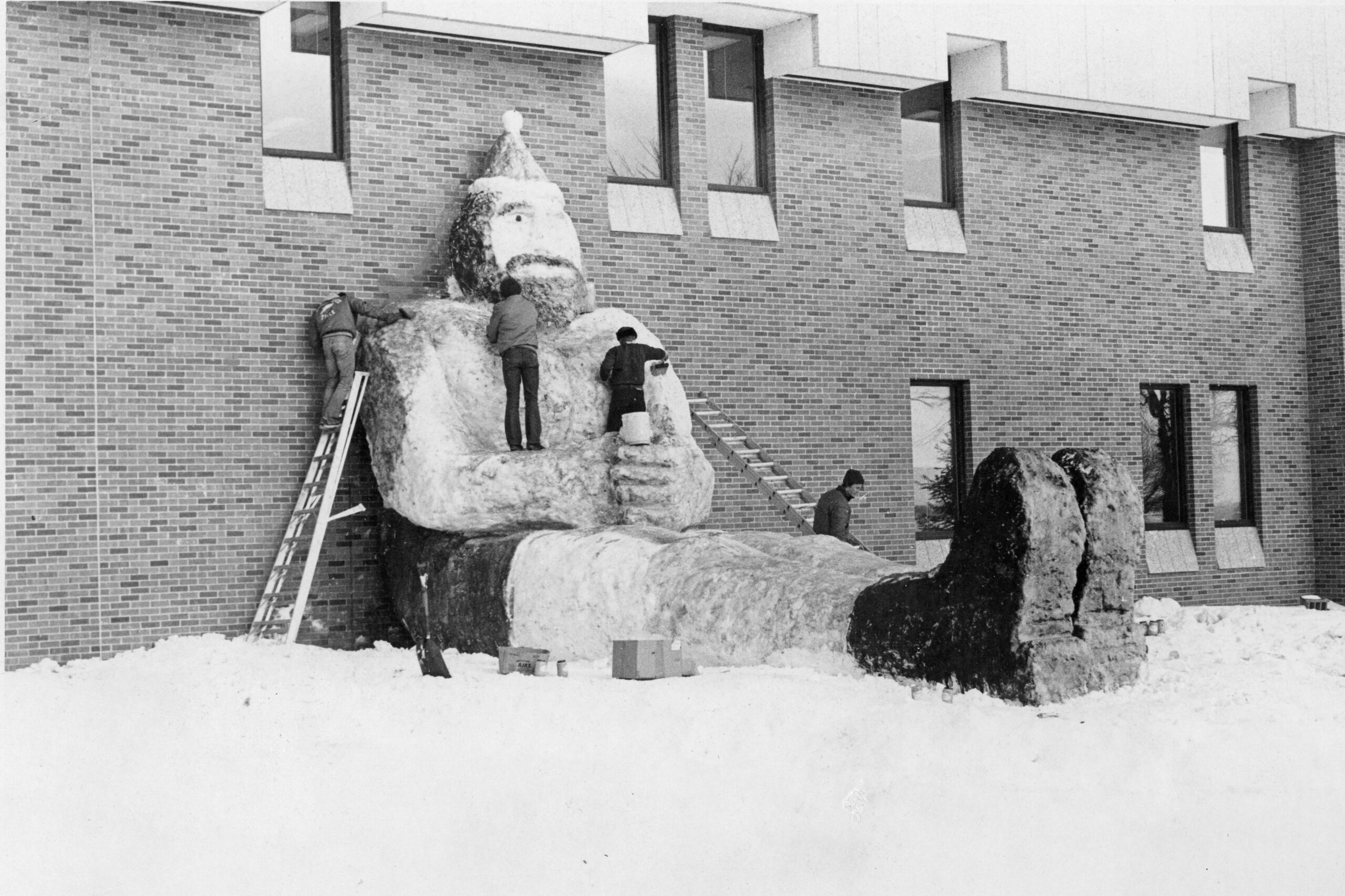
An important part of campus life was Paul Bunyan Week. The festivities resembled Homecoming and started at BSU in 1948.
Each year, a "Paul" and "Carrie" were chosen to reside over the carnival. Students on campus were encouraged to dress as lumberjacks and lumberjills, and for a few years, men were even required to grow beards – facing a fine if they didn't.
The week featured events such as snow sculpting, concerts and dances. Some events changed over the years. During the 1970s, the best tobacco spitter and longest cigarette ash contests occurred. In the 1980s, these changed to the best cherry pit spitter and bubble gum blowing contests.
Powwow
Powwow
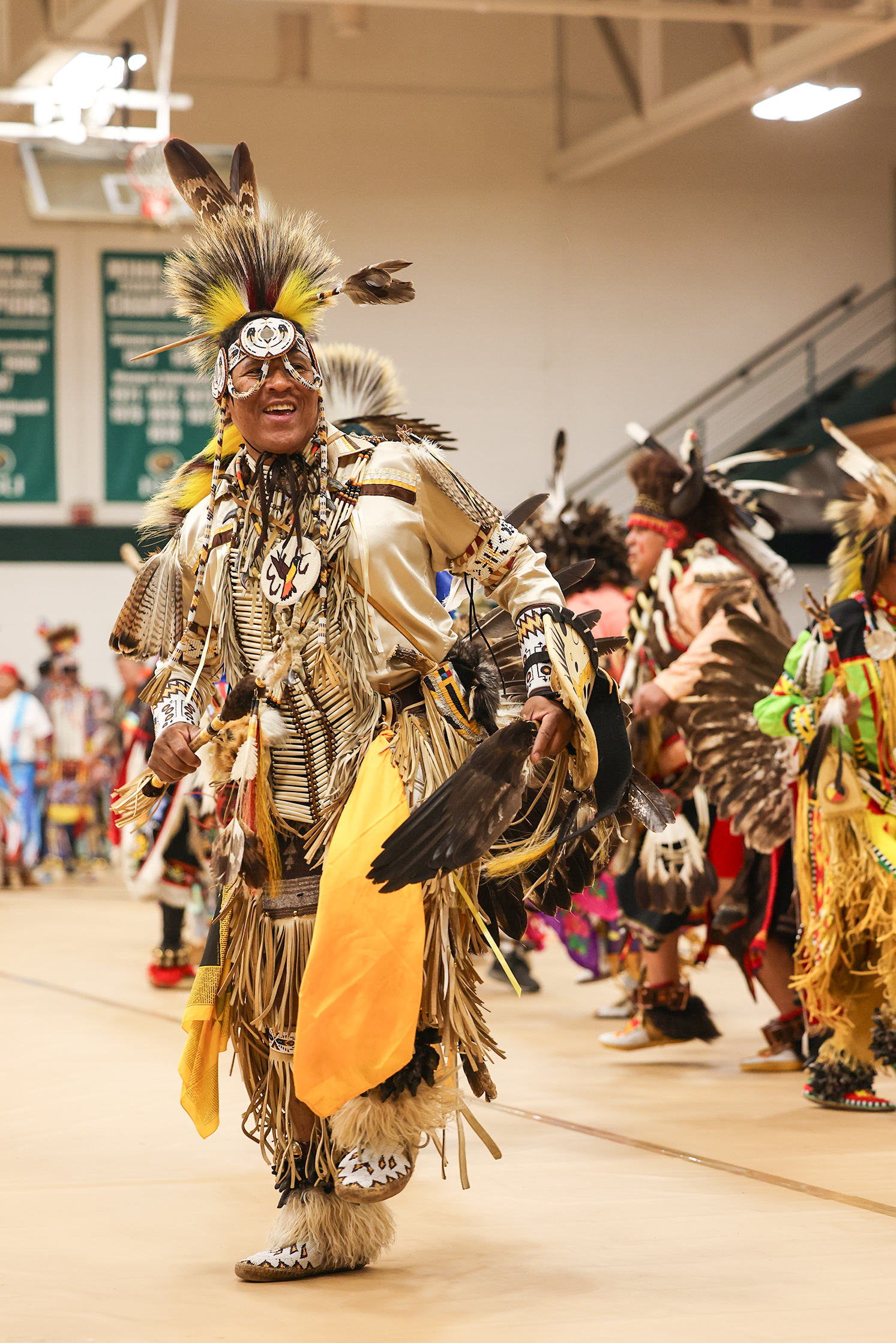
Immerse yourself in the rich and vibrant culture of American Indians at Bemidji State University. Each year, the Council of Indian Students proudly host a campus- and community-wide powwow to celebrate their unique history, traditions and culture. This is an opportunity for everyone to come together and experience the beauty of Anishinaabe heritage.
Established in 1972, the powwow is one of the longest-running campus events and an important tradition that brings Native American dancers and drummers, students, alumni, faculty, staff and community members together to celebrate the American Indian people who first called the land on which Bemidji State sits home.
Because BSU is located between the three largest American Indian reservations in the state of Minnesota (Leech Lake is 15 miles south; Red Lake is 30 miles north; and White Earth is 50 miles west), we also have access to a large number of fluent speakers, spiritual leaders, Indian educators and cultural offerings. Additionally, our incredible AIRC is home to the first Indian Studies program in Minnesota and the first collegiate Ojibwe language program in the world.
The school colors
The school colors
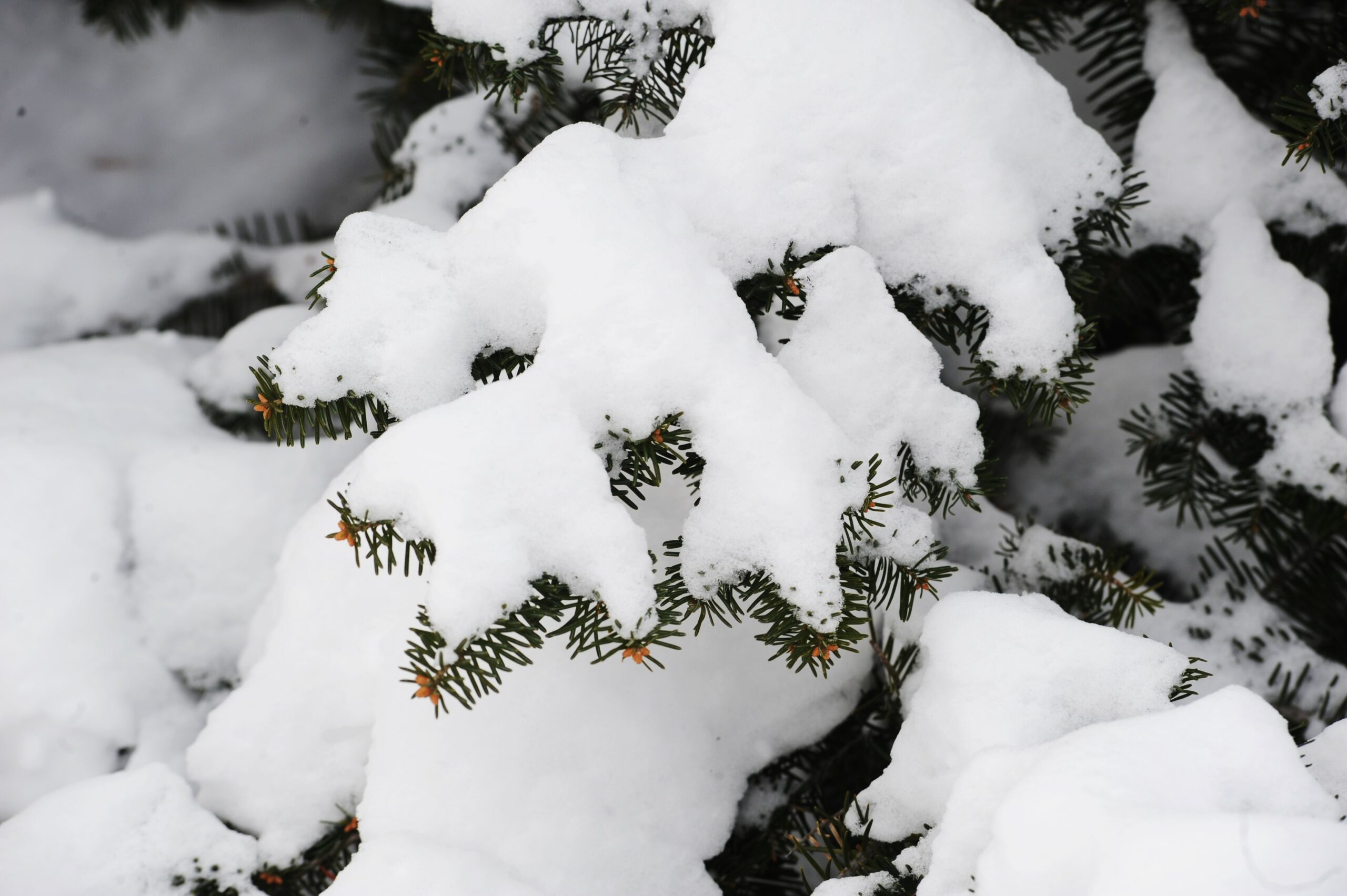
Bemidji State's iconic green and white have been around for over 100 years. But how did they come to be at BSU? It took a courageous pitch from freshman Cyrillus Freeman.
In February 1920, an assembly hour was set aside for the selection of school colors. After the balloting on colors had resulted in a deadlock, Cyrillus Freeman, a student from Minneapolis, rose and commanded attention.
“As we sat here discussing this question,” she said, “I happened to glance out the window. The sight that met my eyes was fresh, green pines silhouetted against pure white snow. What could be more appropriate than green and white?”
On the first round of balloting, Miss Freeman’s choice of colors received just one vote. But after her remarks, her idea was accepted unanimously.
"I feel that my research on BSU's traditions will be useful information for past and future students." –Shauna Lake
A Study of Bemidji State University Traditions: Past, Present, and Emerging
In 2003, Bemidji State University senior Shauna Lake authored a research paper exploring the traditions in BSU's history. Many such traditions are alive today, and Lake's research aided greatly in the creation of this collection.
